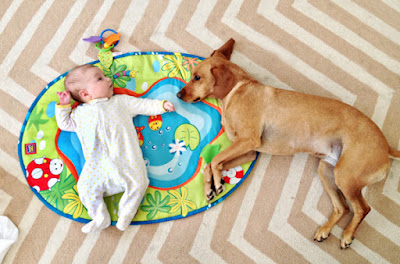Preparing pets for the arrival of a baby

The arrival of a baby is a highly anticipated, exciting, overwhelming, and joyous event. With all the thought and preparation that goes into setting up the home and nursery, the regular pregnancy check ups and dealing with all the symptoms of pregnancy itself (hello morning sickness, hormones, tiredness, aches and pains etc), many expectant parents forget their pets may need help adjusting to the imminent changes. Recovering from the birth, whether natural or cesarean, can take up to 6 weeks or more. Coupled with the sleep deprivation and exhaustion that comes hand in hand with caring for a newborn (feeding, changing, burping, settling, bathing etc), finding the time and patience to deal with behaviour problems in your pets can be difficult. Indeed, this is often when I get a call from distraught parents whose pet’s behaviour has severely deteriorated. ...
